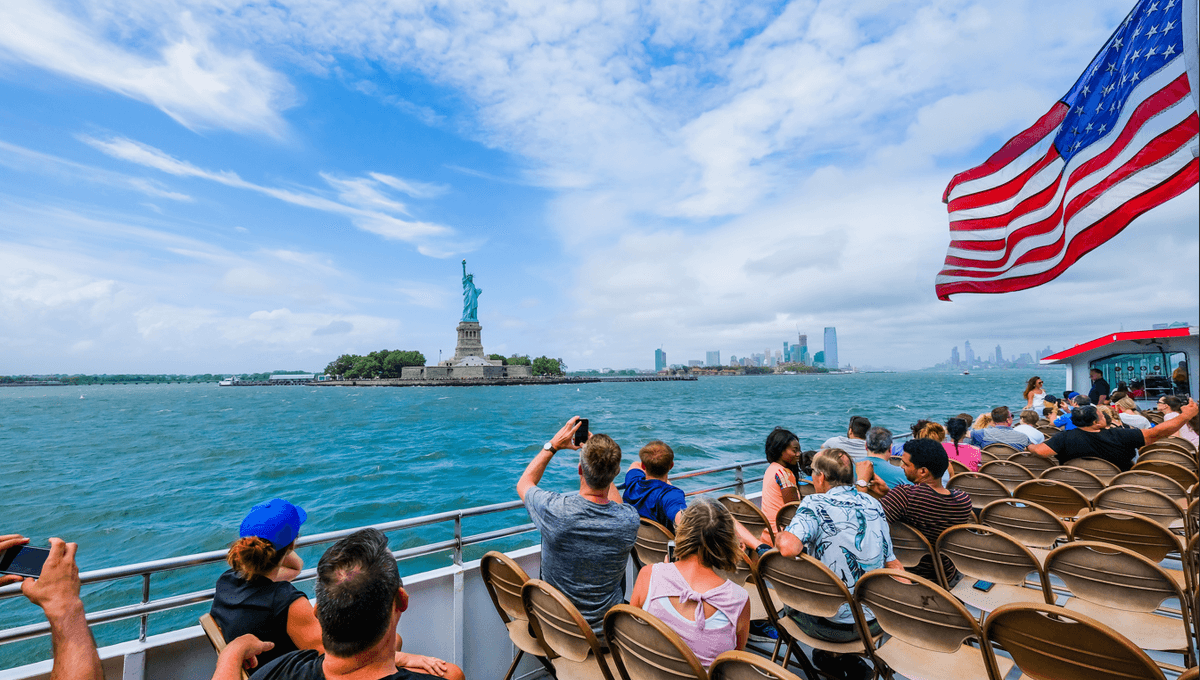
Younger generations in the US are way more skeptical about the “American Dream” than older folks, according to a new poll.
The American Dream is a phrase used to describe the optimistic idea that anyone in the US can attain their own version of success through hard work and determination.
It was popularized by historian James Truslow Adams during the Great Depression in 1931, although the ethos can be linked back to the Declaration of Independence, which states that “all men are created equal” and have an inalienable right to “life, liberty, and the pursuit of happiness”.
Today, just over half of Americans (53 percent) say they believe the dream is still possible, according to the new Pew Research Center survey. Another 41 percent say the American dream was once possible for people to achieve – but is not anymore – while the remaining 6 percent say it was never possible.
Younger generations seem to be particularly dismayed by the idea. The majority of people over 50 believed the dream was still possible, but just 43 percent of people aged 30 to 49 thought so. The most pessimistic group was young people aged 18 to 29, just 39 percent of whom believed the dream was still alive. Around 36 percent of the youngest age bracket also felt the American Dream was out of reach for them.
In a brilliant instance of bias, richer Americans are most likely to buy into the idea. While 64 percent of upper-income Americans say the American dream still exists, only 39 percent of lower-income Americans say the same.
Race is another important variable. A total of 11 percent of Black Americans believe the American Dream was never a reality, while 33 percent believe it’s out of reach for them. White people were the most confident in the national ethos, with 55 percent saying it’s still possible and just 4 percent saying it was never possible.
The trends in the new survey, especially in regard to age, could be taken as a reflection of how the US has changed in the past 50 years.
Social mobility in the US shot up between 1950 and 1980, but has drastically declined since then. Another major blow came in 2007 with the worst global economic meltdown since the Great Depression, leading to widespread job losses and increased wealth inequality.
Recovery was slow and the financial crash’s impact continued to linger in the 2010s, a period that the New York Times called the “Decade of Disillusionment”. This decade was followed by the COVID-19 pandemic and more economic uncertainty in the early 2020s.
The end result of all this has been a growing gulf between the rich and poor. The US has the highest level of wealth inequality of almost every developed country – and the imbalance is rising. In 1971, 61 percent of Americans lived in middle-class households, but that figure had fallen to 51 percent by 2023. Simultaneously, the number of billionaires in the US has skyrocketed from 66 in 1990 to 748 in 2023.
Faced with these gloomy trends, it’s perhaps no surprise that younger Americans have become more disillusioned than their parents and grandparents.
Source Link: Gen Z And Millennials Are Way More Skeptical About The "American Dream"